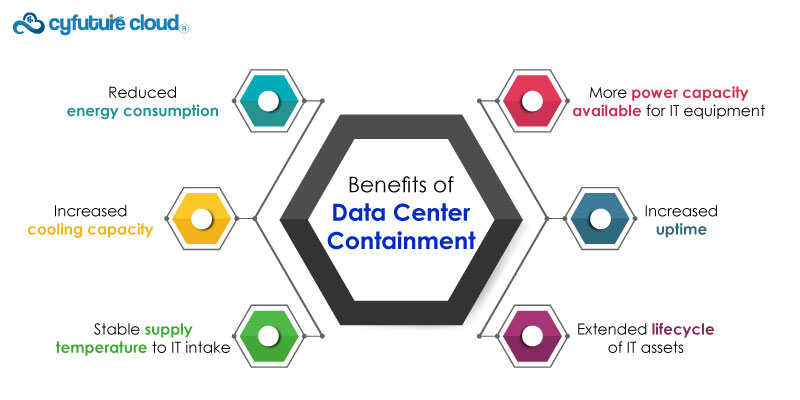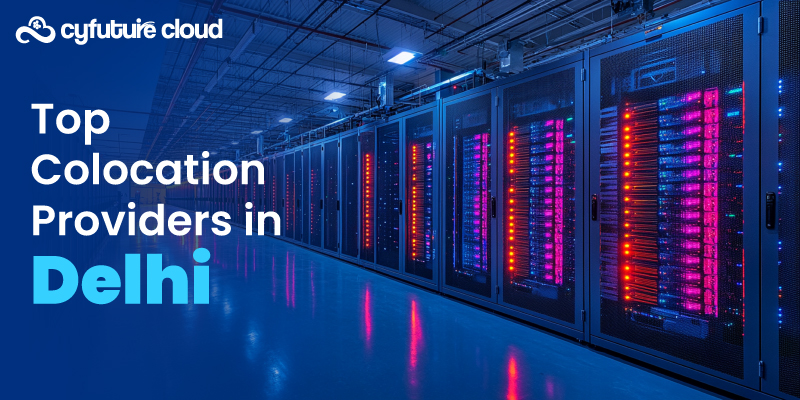Table of Contents
- Understanding Data Center Containment
- The Importance of Containment Solutions
- Types of Containment Solutions
- Emerging Trends and Innovations
- Challenges and Future Prospects
- Conclusion
- Frequently Asked Questions (FAQ)
- 1. What is the Data Center Containment Solution market size, and what is the expected growth rate?
- 2. What are the key drivers and market challenges in the market?
- 3. What are the data center containment solution major market trends and opportunities in the market?
- 4. What are the key customer segments and their buying behavior?
- 5. What are the major geographical regions contributing to the market growth?
Within the rapidly developing field of technology, data centres serve as the central nervous systems that drive our virtual environment.
According to Digital Journal, the size of the global market for data center containment solutions is anticipated to increase at a compound annual growth rate (CAGR) of 5.2% from USD 100 million in 2023 to USD 150 million by 2030.
The demand for effective containment and management strategies has increased dramatically due to their exponential expansion. Let’s delve into the crucial insights defining the landscape of data center containment solutions.
Understanding Data Center Containment
Airflow control tactics and technologies used in data center containment are crucial for optimizing performance. Data center containment involves separating the heated exhaust air from IT equipment from the cool supply air. This process is essential for maintaining temperature control, enhancing energy efficiency, and reducing total operating expenses.
In the contemporary data centre, aisle containment is essential. Effective containment basically keeps hot and cold air separate, which improves equipment performance and the cooling process. This straightforward separation produces warmer, drier return air for the AC coil and a consistent and predictable supply temperature for the IT equipment’s intake.
One of the main ways that forward-thinking companies like Cyfuture Cloud nowadays assist cut down on energy consumption and maximise equipment performance in their data center in Noida, Jaipur, Bangalore, and Mumbai through hot aisle and cold aisle containment. Using a cold or hot aisle containment system improves air efficiency, which results in longer hardware lifespans, higher uptimes, and significant energy savings.
The Importance of Containment Solutions
Energy Efficiency and Cost Reduction
1. Reduced Energy Consumption:
Large volumes of energy are used in data centres, mostly for cooling. Effective containment solutions help optimize this energy usage by segregating hot and cold air streams. By preventing the mixing of these air streams, containment systems enable more precise cooling. This precision reduces the workload on cooling systems, ultimately lowering energy consumption.
2. Cost Savings:
Saving money comes directly from using less energy. A significant amount of a data center’s operating costs are related to cooling. Data centres can experience considerable reductions in their power expenses by implementing containment solutions to improve the efficiency of their cooling systems. These financial savings can add up, particularly for massive data centres that run nonstop. At Cyfuture Cloud, these financial savings influence the cloud hosting prices too.
3. Environmental Impact:
One cannot emphasise how much less energy use is better for the environment. Because data centres require a lot of electricity, they contribute significantly to carbon emissions. Effective containment strategies reduce the carbon footprint associated with data centre operations, which benefits the bottom line as well as the environment.
Equipment Performance and Reliability
1. Optimal Operating Conditions:
Data center equipment, especially servers, operates optimally within specific temperature ranges. Containment solutions ensure that these devices receive consistent and suitable airflow and temperature control. By segregating hot and cold air streams, containment solutions maintain the desired conditions, preventing equipment from overheating or being subjected to temperature fluctuations that could compromise performance.
2. Reduced Risk of Failures:
In data centres, overheating is frequently the reason for hardware malfunctions. Excessively high temperatures can negatively impact server performance and increase the likelihood of hardware failure. Containment solutions significantly mitigate this risk by creating controlled environments that keep hardware within safe operating temperature ranges. This directly contributes to improved reliability and reduces the likelihood of costly equipment failures.
Solutions for data centre confinement have several advantages. In addition to maximising energy efficiency and generating savings, they are essential to preserving the functionality, dependability, and lifespan of data centre equipment. In the pursuit of energy efficiency, cost reduction, and dependable data centre operations, these solutions play a crucial role by establishing controlled environments that regulate temperature and airflow.

Types of Containment Solutions
Data centre confinement comes in two flavours: hot aisle containment and cold aisle containment. Warm exhaust air from IT equipment is contained by hot aisle containment and sent back towards cooling equipment. The aisle where cold supply air is delivered is enclosed by cold aisle containment, converting the remaining space in the data centre into a hot-air return plenum. Every form of data centre confinement has benefits and drawbacks of its own.
Hot Aisle Containment (HAC)
When using a HAC configuration, the hot air that servers release is kept apart from the cooler air by being enclosed in an aisle. This segregation allows for more focused cooling efforts, maximizing efficiency.
The advantages of hot aisle containment include:
- Improved energy efficiency with energy savings over an uncontained environment of 40% or more.
- Certain low-density racks or storage cabinets can be installed in the data center’s open spaces, which are cool.
- For technicians and engineers, the uncontained space provides a more comfortable working environment.
- Since heated air is appropriately returned, precise supply air distribution is less important.
- It is possible to avoid purchasing pricey supply ducting and higher floor distribution systems.
Cold Aisle Containment (CAC)
On the other hand, CAC entails sealing up the chilly passageways and channelling the chilly air into the server intakes. By keeping the hot air away, this method enhances cooling effectiveness and reduces energy wastage.
The advantages of cold aisle containment include:
- Simple to install, requiring no extra manufacturing, drop ceilings or air plenums are effective ways to capture and return exhaust air.
- Typically less expensive to install than hot aisle containment.
- Easier to retrofit in existing data centers.
- Doesn’t have to be, but it usually is, on an elevated surface.
|
Aspect |
Cold Containment |
Hot Containment |
|
Definition |
Encloses the cold aisles to contain the cool supply air. |
Encloses the hot aisles to contain the heated exhaust air. |
|
Mechanism |
Cold air is delivered to the contained cold aisle. |
Hot air is directed to the contained hot aisle. |
|
Cooling Efficiency |
Prevents mixing of cold supply air with hot exhaust air. |
Prevents mixing of hot exhaust air with cold supply air. |
|
Airflow |
Ensures equipment intakes only cooled air. |
Ensures hot air is removed and isolated from the equipment. |
|
Implementation |
Often involves enclosing the front of server racks. |
Often involves enclosing the rear of server racks. |
|
Energy Efficiency |
Typically increases due to more effective cooling. |
Typically increases due to more effective removal of hot air. |
|
Temperature Control |
More precise control of cold air distribution. |
More precise control of hot air removal. |
Emerging Trends and Innovations
Modular Containment Systems
The advent of modular containment solutions offers scalability and flexibility. These systems can adapt to changing data center configurations, allowing for easier modifications and upgrades without major overhauls.
AI-Driven Optimization
Artificial intelligence is making its mark in data center management. Artificial intelligence (AI)-driven systems use real-time data analysis to optimise airflow and cooling, constantly altering settings for optimal performance.
The advent of advanced technologies such as AI, MI, and IoT, together with rising expenditures in digital infrastructure, are expected to propel the worldwide market for data centre containment solutions to significant growth in the upcoming years. The global corporate adoption of cloud computing and high-content apps is the main factor propelling the market for data centre containment solutions.
Challenges and Future Prospects
Data center containment solutions present significant advantages, yet challenges like setup costs and retrofitting existing infrastructures persist. However, propelled by technological advancements and a sustainability focus, the future of data center containment looks promising.
Forecasted from 2023 to 2030, the Data Center Containment Solution Market is poised for remarkable growth, attributed to rising demand across Large Enterprises and SMEs globally. The report provides insights into lucrative opportunities at a country level.
This comprehensive market report spans quantitative and qualitative data analysis, focusing on pricing, market dynamics, major players, and consumer behavior. Segmented for detailed market scrutiny, it covers market evolution, drivers, restraints, opportunities, and challenges. It offers valuable insights for strategic business decisions.
Major Companies in the Market for Data Centre Containment Solutions
An extensive study of the market’s major and up-and-coming players is provided by the Data Centre Containment Solution Market Report. The report offers thorough listings of important businesses that have been selected based on the kinds of items they sell and other market variables. The researchers who worked on the study included the year of market entrance for each participant listed, which can be taken into consideration for the research analysis of the business profile market analysis.
The “Global Data Center Containment Solution Market” study report will provide a valuable insight with an emphasis on the global market including some of the major players such as DirectNET, Vertiv Group, Eaton Corp, Legrand, The Siemon Company, nVent Electric, Subzero Engineering, Crenlo.
Conclusion
Solutions for data centre confinement are essential to making sure these digital hubs run smoothly. Effective containment affects everything from energy usage to equipment dependability, with repercussions that are felt across the technology landscape. In the dynamic field of data management, adopting these solutions as innovations develop becomes not only necessary but also a competitive advantage.
Frequently Asked Questions (FAQ)
1. What is the Data Center Containment Solution market size, and what is the expected growth rate?
The market for data centres as services was estimated to be worth USD 71.92 billion in 2022, and from 2023 to 2030, it is projected to expand at a compound annual growth rate (CAGR) of 25.1%.
2. What are the key drivers and market challenges in the market?
Several key drivers and challenges significantly impact the market dynamics:
- Demand for Energy Efficiency
- Technological Advancements
- Growth in Data Center Infrastructure
- Environmental Sustainability
The Market Challenges are as follows:
- Initial Setup Costs
- Complexity in Implementation
- Maintenance and Upkeep
- Adoption Barriers
3. What are the data center containment solution major market trends and opportunities in the market?
The market for data centre containment solutions is now seeing developments such as the emergence of modular systems, AI-driven optimisation, and a sustainability-focused approach. Opportunities exist in the need for cloud services, in remodelling requirements, in expanding global data centres, and in unexplored markets in developing nations. These developments spur creativity and present opportunities for effective, scalable, and environmentally responsible confinement strategies adapted to changing market demands.
4. What are the key customer segments and their buying behavior?
Major clientele for Data Centre Containment Solutions includes colocation facilities, telecommunications firms, public and private cloud service providers, as well as small and medium-sized businesses. Efficiency, scalability, dependability, and cost-effectiveness are the top priorities for these clients when looking for containment solutions.
Performance, pricing, industry standards compliance, and the requirement for adaptable solutions that work well with their current infrastructure are the main factors influencing their purchasing decisions. Developing solutions that address these various demands guarantees maximum effectiveness and compliance with certain operating specifications.
5. What are the major geographical regions contributing to the market growth?
Key areas such as North America, Europe, Asia-Pacific, Latin America, and the Middle East/Africa are driving the growth of the Data Centre Containment Solutions market. North America has a diverse data centre ecosystem and a high adoption rate of new technologies, with the United States and Canada leading the way. Sustainable development is emphasised in European countries like as Germany, the UK, and France, which encourages the use of effective containment strategies.
With China, India, and Japan leading the way, the Asia-Pacific region is seeing a rapid increase of data centres as a result of digitization initiatives and rising demand for cloud services. Latin America exhibits growing data centre investments, particularly in Brazil and Mexico. across the meanwhile, containment solutions are becoming more and more necessary across the Middle East and Africa, particularly in the UAE and South Africa, where IT infrastructures are increasing. Adapting solutions to these local requirements
Recent Post
Send this to a friend

 Server
Colocation
Server
Colocation CDN
Network
CDN
Network Linux
Cloud Hosting
Linux
Cloud Hosting Kubernetes
Kubernetes Pricing
Calculator
Pricing
Calculator
 Power
Power
 Utilities
Utilities VMware
Private Cloud
VMware
Private Cloud VMware
on AWS
VMware
on AWS VMware
on Azure
VMware
on Azure Service
Level Agreement
Service
Level Agreement 




















